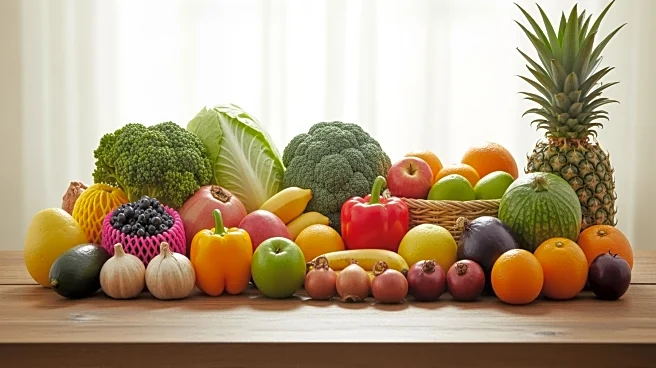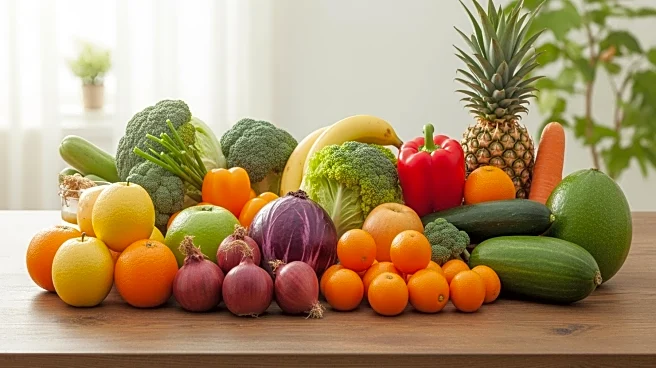What's Happening?
South Korea has reported a 5% increase in its agricultural and food product exports for the first ten months of 2025, reaching $8.59 billion compared to $8.18 billion in the previous year. This growth
is primarily driven by strong demand in the Middle East, the European Union, and North America. Notably, exports to the Middle East surged by 20.4%, while those to the EU and North America increased by 14.8% and 13.9%, respectively. However, exports to the United States saw only a marginal increase of 0.6%, attributed to escalating U.S. tariffs. The data, compiled by the Ministry of Agriculture, Food and Rural Affairs, highlights significant growth in specific product categories, such as instant noodles, coffee, and kimchi.
Why It's Important?
The increase in South Korea's agricultural exports underscores the resilience of its food industry amid global trade challenges, particularly with the United States. The modest growth in exports to the U.S. reflects the impact of rising tariffs, which could affect trade relations and economic dynamics between the two countries. The robust demand from other regions, such as the Middle East and the EU, indicates a diversification of South Korea's export markets, potentially reducing its reliance on the U.S. market. This shift could have broader implications for global trade patterns and economic alliances.
What's Next?
As South Korea continues to navigate the challenges posed by U.S. tariffs, it may seek to further strengthen its trade relationships with other regions. This could involve negotiating new trade agreements or enhancing existing ones to secure more favorable terms. Additionally, the South Korean government might implement strategies to boost domestic production and innovation in the agricultural sector to maintain its competitive edge in the global market. The ongoing trade tensions with the U.S. could also prompt South Korea to advocate for more stable and predictable trade policies.












